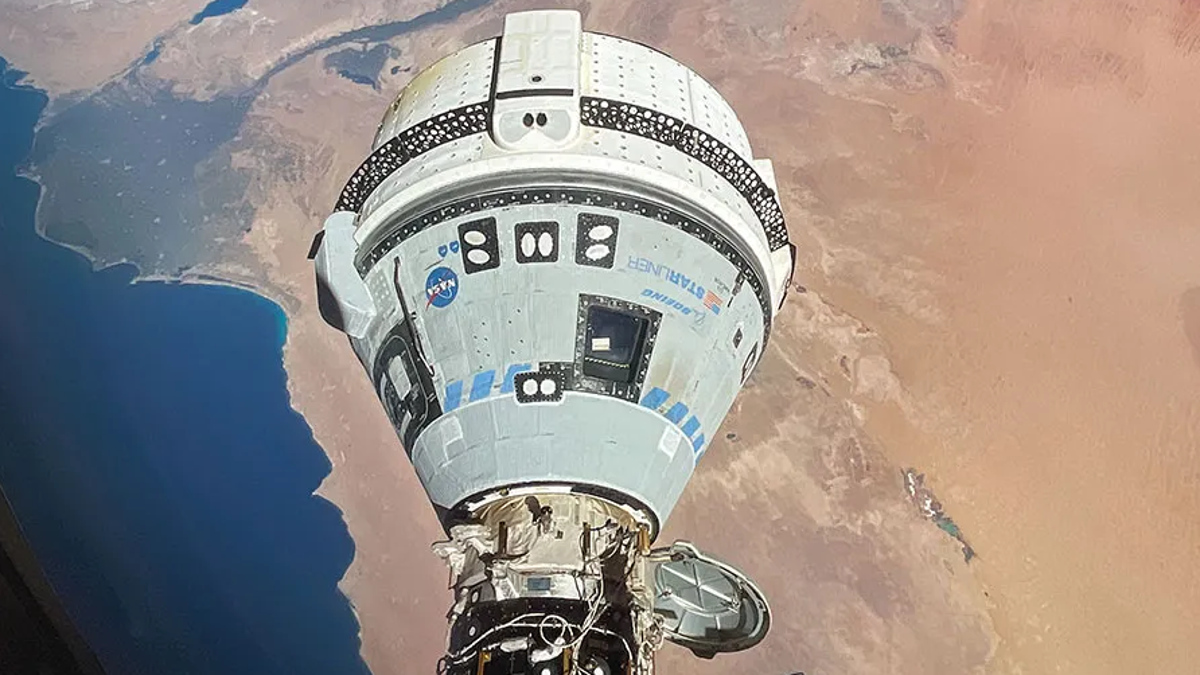Boeing’s Starliner spacecraft has been docked at the International Space Station (ISS) for nearly a month, with NASA and its commercial partner repeatedly delaying the launch of the crew aboard the capsule. Despite the indefinite postponement of Starliner’s return flight, NASA and Boeing insist the spacecraft is fully operational, capable of returning to Earth at any time, and that the two astronauts on board are not trapped in space.
Boeing officials have described news coverage of the mission so far as “very painful,” stressing that this is a test mission with the primary goal of gathering as much data as possible. This may be true. However, there have been troubling signs suggesting that perhaps things are not as smooth sailing as NASA and Boeing are claiming.
Considering all the additional tests the spacecraft has had to undergo while docked at the ISS, it’s also unclear how the program will progress once the test flight is complete. Starliner’s first crewed flight has exposed several issues with the spacecraft that need to be resolved. Will NASA require Boeing to spend more time fixing its capsule and will a second test flight be necessary? These are issues that NASA and its partner have yet to address amid a wave of bad press and public ridicule.
Boeing The Starliner capsule is launched atop United Launch Alliance’s Atlas V rocket on June 5, carrying NASA astronauts Butch Wilmore and Suni Williams to the ISS. of the spacecraft had difficulty docking to the space station after five of the spacecraft’s thrusters failed during its approach. The Starliner was also developed five helium leaksone of which was identified before its launch.
The mission was originally planned for eight days, but the crew’s return has been delayed several times while ground teams conduct tests on the vehicle and collect data before giving the green light for the astronauts to return to Earth. During a press conference on Friday, NASA officials revealed that the mission does not yet have a return date, pending the completion of testing. They are also very upset about claims that astronauts are stuck on the ISS.
“Butch and Suni are not stranded in space,” Steve Stich, manager of NASA’s Commercial Crew Program, told reporters Friday. Despite the propellant failure and helium leaks, NASA and Boeing insist the spacecraft can fly astronauts home at any time and that the extra few weeks in orbit will perform tests that otherwise can’t be done on Earth.
“We understand these issues for a safe return,” said Mark Nappi, Boeing’s program manager, during the press conference Friday. “We don’t understand them well enough to fix them permanently.” The Starliner currently docked at the ISS cannot be changed much as a result of ground testing, but the data could inform future designs of the spacecraft.
Engineers are also evaluating an RCS oxidizer isolation valve in the service module that did not close properly. An RCS, or Reaction Control System, uses thrusters for attitude control and steering, while the oxidizer isolation valve regulates the flow of oxidizer, which is essential for burning fuel in the thrusters.
It’s understandable that Boeing and NASA want to conduct tests on the vehicle, since this is a test mission after all. But the tests that have been piling up for weeks are a bit worrying and suggest that the Starliner may not be ready to be designated as the second commercial spacecraft to carry astronauts to the ISS. NASA’s other commercial partner, SpaceX, has so far launched eight crews to the space station. Boeing, on the other hand, has yet to fulfill any of its six contracted flights as part of its $4.3 billion deal with NASA.
Boeing previously launched two uncrewed flights to the ISS, which also suffered from a number of glitches. This is the first time the vehicle has carried a crew into orbit, and years of delays have led to anticipation as well as some skepticism that the company can pull it off.
During the press conference, Boeing’s Nappi told reporters that he goes through the Google alerts set up for the Starliner every morning and that it has been “very painful to read.” “We’ve had a really good test flight…and it’s been viewed quite negatively,” he added. “We are not stuck on the ISS. The crew is not in any danger. And there is no increased risk when we decide to bring Sun and Butch back to Earth.”
It’s no surprise that Nappi is pained by Google’s alerts. Even before the Starliner fiasco, the company has been under scrutiny since the infamous incident earlier this year, when a door exploded on a Boeing jet flown by Alaska Airlines. A few months later, the federal government said Boeing had violated the 2021 agreement failing to “design, implement and enforce a compliance and ethics program to prevent and detect violations of US fraud laws throughout its operations.” Boeing is too under investigation for two fatal plane crashes which killed 346 people in 2017 and 2018.
The ongoing Starliner disasters are only adding to the growing criticism of Boeing and increasing concern about the company’s adherence to safety standards. Through it all, NASA has stood by its commercial partner, at least publicly, and assured the media that there is nothing to worry about.
Starliner is certified to remain docked to the ISS for a maximum of 45 days during its current mission. The spacecraft may have to undergo recertification while in orbit, unless NASA and Boeing manage to complete additional testing of the Starliner before its deadline. It’s still not clear how the space agency decides to move forward after the Starliner’s descent into the Utah desert.
For more space flights in your life, follow us X and bookmark Gizmodo’s dedicated Spaceflight Page.
